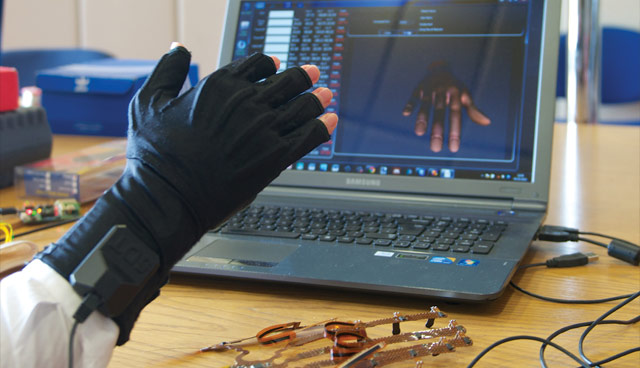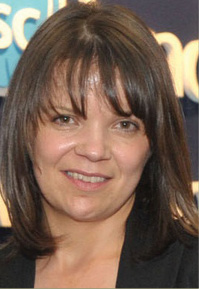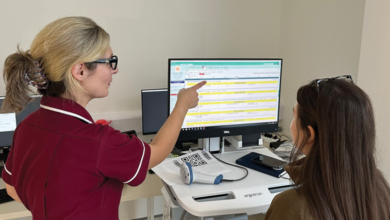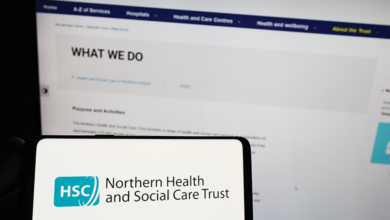Improving health outcomes for older people via technology

Dr Joan Condell is lead investigator on a three-year transnational Interreg project ‘SENDoc’ (Smart sENsor Devices fOr rehabilitation and Connected health) and CEO of Ulster University spinout company ActionSense Ltd. She outlines some of the main concerns and challenges facing the public health service from a wearable technology perspective.
 The delivery of public health services effectively and efficiently is a common challenge across Europe. Patients often have external factors affecting their situation with common challenges existing particularly in rural or remote regions. Healthcare planning needs to carefully consider changing patient conditions and care needs. Within wearable healthcare it is vital that patient end-user groups are consulted and informed as stakeholders; their input and feedback on wearable technology developments is crucial to rollout of successful new delivery models, their acceptance and uptake.
The delivery of public health services effectively and efficiently is a common challenge across Europe. Patients often have external factors affecting their situation with common challenges existing particularly in rural or remote regions. Healthcare planning needs to carefully consider changing patient conditions and care needs. Within wearable healthcare it is vital that patient end-user groups are consulted and informed as stakeholders; their input and feedback on wearable technology developments is crucial to rollout of successful new delivery models, their acceptance and uptake.
Co-production
Multi-disciplinary teams need to work together to consider and develop programs of rehabilitation and exercise from the home, carefully designing and analysing data from regional and national case studies. New service delivery models need to be designed, developed and tested across a range of settings. Collaborations such as SENDoc are important to bring benefits to global regions. Multiple experts collaborating from a range of disciplines are needed to maximise impact and success of wearable technology in the communities. The inclusion of patients as experts and co-producers, ensures that technology and trials developed are both scientifically reliable and pragmatic. New service delivery models need to be optimised to improve flexibility, function and quality of life so that measurable and demonstrable impact can be provided. Currently the SENDoc EU Interreg project is assessing the use of wearable technologies to improve health outcomes for rural communities in European northern peripheral regions.
End-users trends
Users are keen to test and trial wearable technologies as they move around and try to increase their fitness levels and improve their overall health. This trend has been seen both with fitness groups as well as fashion groups. In particular activity trackers have become increasingly common (see the paper: Sensors 2017, 17(6), 1277 by Tedesco et al: Review of Activity Trackers for Senior Citizens: Research Perspectives, Commercial Landscape and the Role of the Insurance Industry). People are now demanding that wearable technologies go beyond fashion or trend and actually start to assist them, address their individual daily health and fitness goals. This goal can be achieved with the combination of both wearables and smartphone apps.
Young adults are the most tech savvy group, keen to use wearable technology and adopt it to their needs. In particular, women are more likely to use mobile health devices and apps than men; trying to monitor their specific health needs. Wearable technology users tend to have more disposable income. Consumers are demanding their wearables and apps become part of their daily routine, fitting into their lifestyle and improving their overall long-term health.
Data analytics
Aside from general fitness wearables and apps, there is also an increase in the use of specific health requirement monitoring; more common in older age groups. This is the larger opportunity in healthcare – medical grade devices for end-users to monitor and treat or rehabilitate chronic disease and other conditions. An example of this is the ActionSense glove (www.actionsense.org) which was designed to rehabilitate and monitor stiffness in finger joints for patients with Rheumatoid Arthritis (RA), post-stroke patients with reduced mobility or post-hand surgery to assess hand mobility (as shown in IEEE Sensors 2017 paper by Connolly et al, Flexible Smart Glove for analysis of Hand Range of Motion in a clinical context). The particular example in RA is characterised by painful, stiff and swollen joints. A problematic feature of RA is the sporadic nature of ‘flares’, which indicate high disease activity. Flares can occur more frequently when treatments are ineffective against underlying disease. It is important that doctors have an accurate view of flares to reduce the risk of joint damage and disability. Trial studies are ongoing within SENDoc at Ulster University which postulate that home monitoring using wearables, where the patient performs daily exercises will improve detection of flares in their RA condition, better inform treatment decisions and thereby reduce disease activity.
The market must advance for specific wearables and co-production, specific health monitoring medical device development and trials are vital for acceptability and fit with industry, health insurance companies, clinicians and end-users. There is significant billion dollar market potential, in particular in the US (see the Wearable Health and Fitness Technology in U.S. Medical Care report, January 2017). Successful medical grade wearables could save health care services billions in costs. Not only does it make commercial success but successful medical grade wearables also meet end-user demand providing improved long-term health outcomes. End-user acceptability and device flexibility is key to success and significant uptake. Consumers increasingly demand convenience in all things, including their health monitoring.
“Healthcare planning needs to carefully consider changing patient conditions and care needs.”
Data analytics also plays a key part here – clinicians need to proactively manage patients’ wearable data and need to take time to complete this task to facilitate integration of the data into patient health records. Concerns around patient data security are being overcome. Positive outcomes need to be evidenced from trials demonstrating successful wearable data analytics merged with new models for clinician decision-making.
The physically and mentally healthier future
Insurance companies will start to use wearables to facilitate and encourage consumer health behaviour. Patient personal data needs to be managed carefully as insurance companies will be keen to validate their risk calculations. It has been evidenced through surveys that a significant proportion of patients would share their personal health data if it meant personal better healthcare delivery and long-term health outcomes.
Company wellness schemes are also already using wearables and fitness trackers to facilitate staff wellbeing monitoring. The area of mental health is not being given much attention – this will also be considered from the wearables perspective as companies are increasingly keen to manage and monitor their staff stress levels for early detection of mental health problems.
Purpose built wearables will emerge, evidenced through successful trials from multidisciplinary teams. Validation is essential from FDA and CE bodies, building documentation around efficacy which is demanded by the medical professions. In the meantime, expert activity trackers and other unregulated fitness wearables will serve end-users needing to manage lifestyles.
Dr Joan Condell is a senior lecturer in the School of Computing and Intelligent Systems in the Department of Computing and Engineering at Ulster University (Magee).





